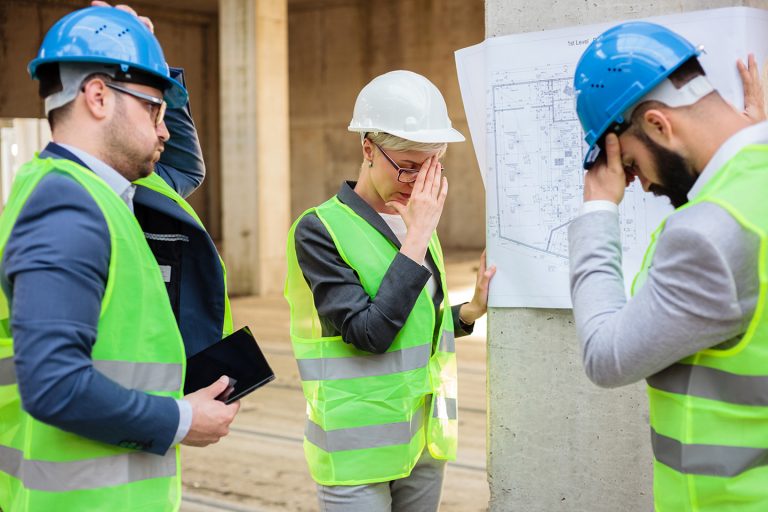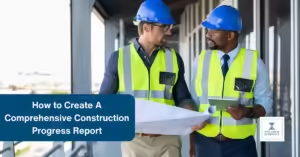The failure of building structures are often due to lack of knowledge about construction materials; improper mix proportions,; poor site supervision because of the hesitation to use project management systems; poor Labor workmanship which is often unseen because of the absence of essential construction trackers; less quality materials; lack of technical or specialty knowledge; as well as lack of laborers.
These factors can lead to costly delays because the crew needs to redo some work phases. Sometimes, the effect is over budget. Either way, poor quality construction work should be avoided. So here, we listed down 10 possible causes of poor quality work at the construction site:
Use of Low-Quality Materials
In order to build a safe and stable structure, the type of materials used should be of high quality. These types of materials last longer and leave no room for any defect. On the other hand, inferior building materials cause problems such as leakages, concrete cracks, sudden dropping of ceilings and inadequately functioning structures. Leaking drainage pipes result in toxic molds on the buildings. There are common manufacturing problems that result in inferior materials. Some of these problems are an inferior drywall and deteriorating flashing.
Using low-quality materials in construction guarantees zero durability and improper installations. Take the example of bent window frames. Poor quality window frames may bend while on transit only to cause installation complications.
Lack of Proper Site Supervision
As a contractor, it is your job to ensure that everything falls into place according to the overall project quality plan and not just rely on what your foremen or project managers tell you over the phone. A contractor makes sure that the project is finished on time and that there is no wastage of resources. This is where essential construction trackers like Pro Crew Schedule become useful.
Most construction sites are now digital. Many contractors already realized the importance of project management systems at the site. This is why most of them already rely on construction project management software like Pro Crew Schedule to monitor the processes and progress of work at the site.
Traditional ways of reporting are now obsolete and greatly ineffective. Construction project management software have made reporting faster and easier so contractors working at their offices can stay updated even when they don’t do site visits. With project planning software, contractors can identify site issues that can affect the quality of the project and resolve them right away. Through constant supervision with the help of reliable project planning software, the contractor can definitely secure the project’s quality as well as the safety against any construction defect.
If there is no or lack of proper supervision, chances are that the constructors may come across a sign of awaiting disaster without knowing it. A contractor should be there to detect any future defect. They should know how every material fits into the design.
Lack of Quality System
The worst source of the defect is sometimes due to “no” quality system governing in a project or even in the corporate organization. The lack of the system can boost to possible losses of financial flow of the project. The example of this is “the delivery of concrete to site” if it is to be checked by a non-competent personnel of the quality department the concrete might be poured to the foundation while the concrete delivered to the site doesn’t match to the design mix for the foundation. Therefore, there should be a system to counter-check deliveries of concrete to the site and the same with the other construction materials. And this work must be done by a competent Quality Engineer.
Zero Project Auditing
While project management can be done via project managers’ software, auditing is different. Auditing is essential in every project construction work. Performing an audit is what determines the success of the construction work. There are many types of audits some of them include quality audits, pre-selection audits, and project internal audits. Auditing processes help monitor the performance of the project to ensure that it remains within the corporate procedures’ scope.
Quality managers are the ones responsible for holding audits in any construction work. Their job is to foresee the project’s construction according to the set standard and requirements, be it ISO: 9001 standards or contractual standards. Without these types of audits, there is no guarantee that the project will not have construction defects once completed.
Poor Quality Procedures
For any construction project to function properly, it is required by the ISO: 9001 standards that certain procedures be documented. These procedures provide a way of making sure that all the details of the construction work fall into place. There is a long, never-ending list of the procedures that a construction company should document. Just to mention a few; any construction work should have a procedure of auditing, procurement, material approval, reporting and document control etc. Having quality procedures creates better quality management systems that prevent construction defects.
No Drawing and Specs for Crew Guide
A drawing of the expected building helps create the general picture of how the building should be built. Drawing the model of the structure also helps point out the specifications of the construction. It is important to know on which soil you should build on and the type of foundation for the building. Lack of a strong foundation results in cracked foundations and unstable buildings.
The drawing also shows the area to be covered by the building and the measurements. Constructing a building without the correct measurements may leave small room for drainage systems and other installations. Drawings and specifications eliminate technical deficiencies. And this is the scariest one.
These days, drawings and specs can be easily shared to the whole team and this is all thanks to project managers software like Pro Crew Schedule. Being cloud-based, drawings can be stored in a single folder that’s accessible by all. So, it will be helpful to have project managers’ software in your construction business.
Design Complexity
Architects and designers may come up with a complex design. A complex design takes the time to understand and it is more challenging to construct a building with such designs. In the process of trying to understand the complex nature of the design, one may miss out on the important tiny details such as the building’s support. A building without strong pillars for support may have cracks which may end up causing the building’s collapse.
A complex design may be allocated a certain period for completion only to spend half of it going back to the design for a better understanding. Complex designs add complexity in the construction work to which only the designer can interpret. No matter how complex the design is, it should be easy to understand.
Late Design Concept
The design concept is a stage in construction that is very crucial. The design concept helps the consultant team to come up with the cost plan, planning strategy, procurement option, ability to build and construction logistics and the outline specifications. Before construction begins, the design concept stage must be dealt with first.
It also helps the consultant team understand the structural and architecture design. A contractor is picked at the end of this stage which is why late design concepts can lead to the wrong choice of contractor and other mistakes such as poor cost planning. Such errors contribute to most of the construction defects.
Project Objectives
Objectives are the goals of the construction project. Every construction work should have clearly stated objectives. Apart from ensuring quality and preventing defects, the objectives also ensure that the construction process runs smoothly. Objectives also help to meet the construction deadline.
Absence of Quality Policies
Policies and objectives form the basis of an organized construction workforce. Every construction company must abide by its policies to avoid construction defects. Quality policies ensure the safety of the building and the workers. Some policies are put in place in accordance with the ISO: 9001 while others are formed by the construction company. These policies help prevent defects and help to oversee the quality of the building.
Conclusion
All these sources of defects in construction lead to loss of materials, money, and work hours trying to correct the defects once they occur. Though it is hard to avoid defects or non conformance in construction but we can simply minimize those if we try to implement the necessary rules or system that will develop the quality of work and eventually prevent the potential rise of project cost or budget.





